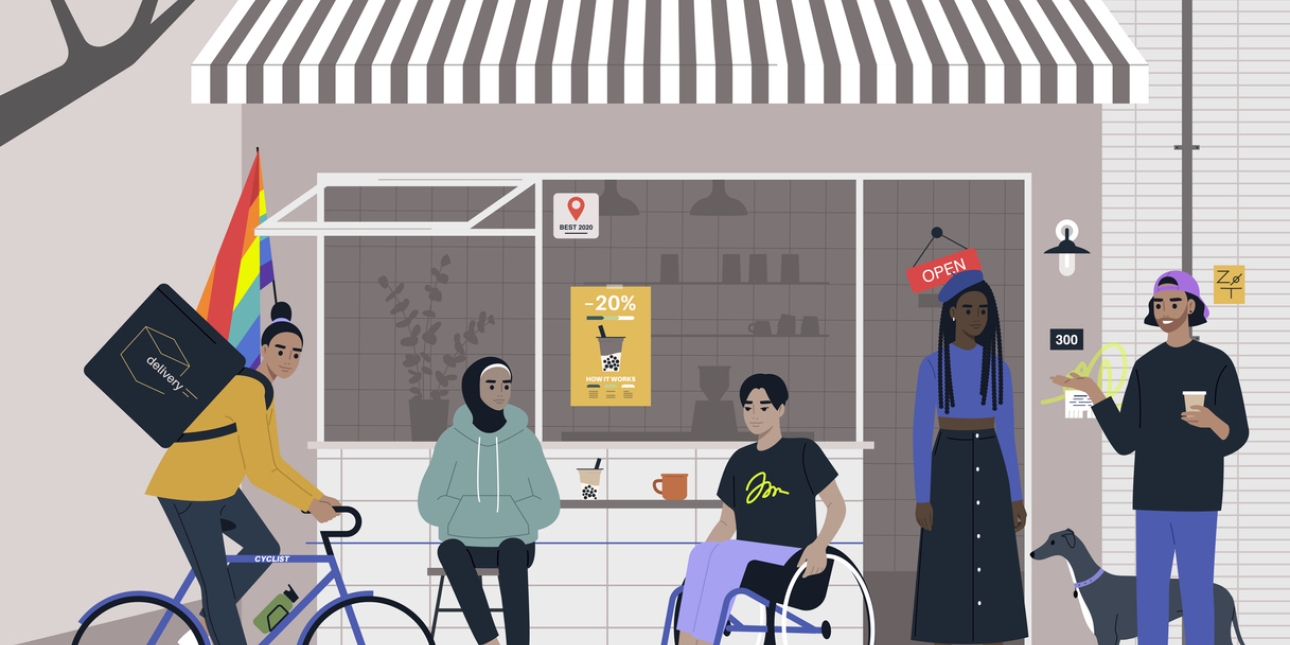The importance of co-creation in inclusive comms campaigns
From identifying communities to creating safe and inclusive spaces, how can you collaborate to create more authentic, impactful public relations?
As we collectively navigate what inclusion means for an industry thus far dominated by cultural monolithism I have been heartened to see and hear of the pressure that Gen Zers are injecting into agency and in-house life. They’re not just requesting but demanding inclusion – for themselves in the workplace and for the work they are creating.
And given that Gen Z is arguably the most tapped into current culture (as is often the case with the youngest team members of agency life), it’s important to embrace their perspectives if we are to ensure our campaigns remain relevant.
In my role as inclusive communications director at The Unmistakables, I speak to agencies on a daily basis who are attempting to navigate a path through the apparent disconnect between what audiences want, what clients want and what traditional media wants. Regardless of age, we’re looking at at least two culturally different viewpoints – sometimes three.
What audiences want depends on the audience of course, what clients want is often dictated by traditional views of what success looks like (column inches) alongside the viewpoints of their internal stakeholders who more often than not are not involved or have any idea of how earned media works, and what the traditional media wants which – at the moment – is more often than not how a story can be spun into the culture wars debate.
I’ve also observed an increasing number of senior practitioners doing what they’ve always done. Which would be completely fine if the Global North hadn’t experienced the collective cultural awakening prompted by the murder of George Floyd, which has paved the way for everyone from underrepresented communities (not only people of colour) to start to demand greater inclusion and equity.
So, where does that leave PR campaigns? Designed to appeal to the target audience through the lens of earned media, we often witness earned media considerations taking precedence over what the audience wants or needs. A good reminder for us all is the CIPR’s definition of public relations as “...the planned and sustained effort to establish and maintain goodwill and mutual understanding between an organisation and its publics.”
With that in mind, it goes without saying that it is vital for audiences to be involved in the creation of campaigns that are supposedly targeted towards them. To put it another way ‘Nothing about us, without us’ (a phrase first coined within the disability rights movement). This moves beyond simply asking someone for their thoughts to intentionally building in a careful and equitable approach to honouring lived experiences throughout the communications development process.
Not only does this ensure authenticity, it encourages members of groups and communities to actively get involved in the creation of campaigns which will help mitigate the risks of making mistakes or omitting important nuances.
Here are five steps on how to create collaboration moments to create more authentic, impactful PR campaigns:
1. Identify the communities
Start by identifying the underrepresented communities that you want to engage with. This could include LGBTQIA+ communities, people with disabilities or any other groups that are traditionally underrepresented in mainstream media. Be as specific as you can - ‘people of colour’, for example, won’t help you in refining a strategy and creative idea.
2. Research and understand
Take the time to research and understand the specific needs, interests, values, and cultural nuances of the communities you're targeting. This will help you approach co-creation from an informed perspective and avoid unintentional stereotypes or misrepresentations.
3. Get the relevant views, early
After taking the time to research the community you would like to reach, engage people with lived experience and expertise. If you don’t have lived experience of the issue you are seeking to portray, you should always ask someone who does, or ask someone with cultural proximity, to offer meaningful feedback.
Working in an inclusive way means slowing down to get relevant views and consider things from multiple angles. In a fast-paced environment where people are busy, this might feel hard. To help mitigate against this and to respect people’s time and expertise, ask for these views as early as possible, giving dates where you can.
4. Create a safe and inclusive space
Foster a safe and inclusive environment where collaborators feel comfortable expressing their ideas, concerns, and perspectives. This can be achieved through open and respectful communication, active listening, and ensuring that everyone's contributions are valued. Recognise the time and expertise community members invest in the co-creation process and provide compensation accordingly to ensure there is a respectful and equitable ‘value exchange’.
5. Incorporate feedback
Actively listen to the feedback and suggestions to refine and shape your campaign strategy, messaging, execution and channel activation. Keep lines of communication open to ensure your collaborators are aware of the changes you are making to the campaign as a result of their input. Where you choose not to incorporate some feedback, be open and transparent about this - explaining the rationale behind the decision.
Shilpa Saul is the inclusive communications director at The Unmistakables.


